Stamped Concrete Patio vs. Pavers: A Cost and Design Comparison
When planning to enhance your outdoor living space in Kansas City, Lee's Summit, Overland Park, Gladstone, or North Kansas City, choosing the right patio material is a crucial decision. The two most popular choices homeowners consider are stamped concrete and pavers.
Angel Sosa
2/9/20255 min read
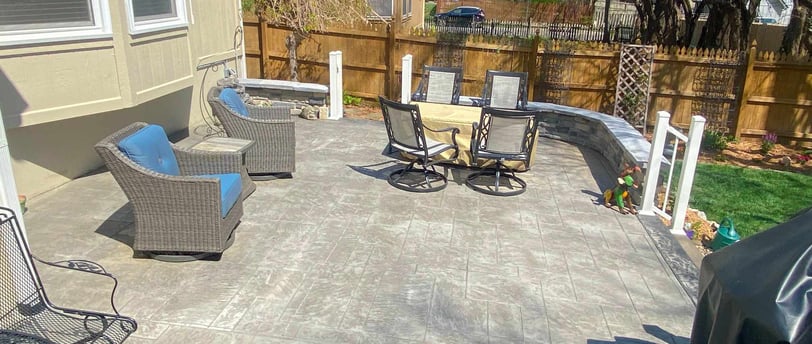

Quick Overview
When planning to enhance your outdoor living space in Kansas City, Lee's Summit, Overland Park, Gladstone, or North Kansas City, choosing the right patio material is a crucial decision. The two most popular choices homeowners consider are stamped concrete and pavers. Both options offer unique advantages in terms of aesthetics, durability, maintenance, and cost. Understanding their differences can help you make an informed choice that best suits your budget, lifestyle, and design preferences.
At ProDeck Solutions, we specialize in crafting durable and aesthetically pleasing patios that enhance outdoor spaces. In this article, we’ll dive deep into the key differences between stamped concrete and pavers, answering common questions about cost, longevity, maintenance, and design options.
1. Aesthetic Appeal: Customization and Style Choices
A patio is more than just an extension of your home—it’s a space for relaxation, entertainment, and curb appeal. Choosing between stamped concrete and pavers significantly impacts your outdoor aesthetics.
Stamped Concrete:
Offers a seamless, uniform look that can be stamped to resemble stone, slate, brick, or even wood.
Provides a wide variety of patterns and colors, including natural earthy tones and bold, modern shades.
Can be customized with decorative borders, intricate designs, and color enhancements.
Over time, stamped concrete may fade or show wear, especially in high-traffic areas, unless properly maintained.
Pavers:
Available in various shapes, sizes, colors, and textures, allowing for highly intricate designs.
Can be arranged in different patterns such as herringbone, basketweave, or circular formations, offering a timeless look.
Color integrity is better maintained over time, as pavers are dyed throughout the material rather than just on the surface.
If you wish to change your patio’s design, pavers can be easily replaced or rearranged.
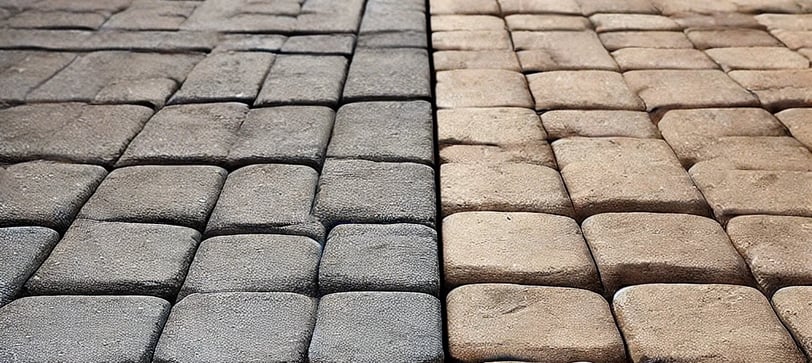

2. Durability and Longevity: Which Lasts Longer?
A patio is a long-term investment, so choosing a durable material is essential. Both stamped concrete and pavers offer durability, but their performance differs under various conditions.
Stamped Concrete Durability:
✔ Resistant to heavy foot traffic and general wear.
✔ Can last 20-30 years with proper maintenance.
✔ Susceptible to cracking due to freeze-thaw cycles and shifting soil.
✔ Repairs can be challenging, as matching the original texture and color is difficult.
Paver Durability:
✔ Extremely durable, often lasting 50+ years with proper care.
✔ Highly resistant to weather fluctuations, as individual pavers allow for natural expansion and contraction.
✔ If a paver cracks or shifts, it can be easily replaced without disturbing the rest of the patio.
✔ Can handle higher weight loads, making them ideal for driveways and high-traffic areas.
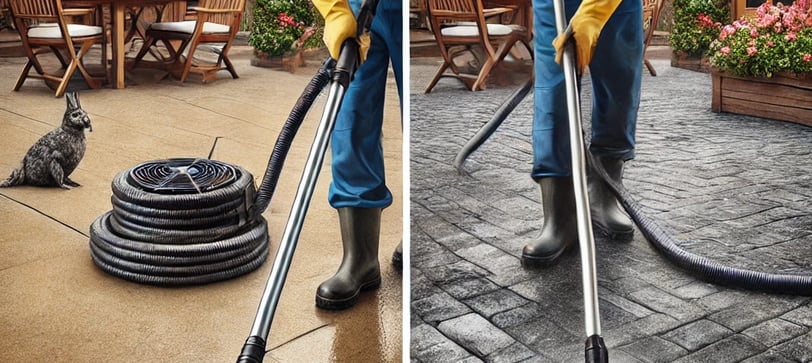

3. Maintenance and Upkeep: What’s Easier to Maintain?
Maintenance is a crucial factor when selecting a patio material. While both options require some level of care, they differ significantly in long-term upkeep.
Stamped Concrete Maintenance:
Requires sealing every 2-3 years to prevent stains, color fading, and surface damage.
Can develop cracks over time, which may require resurfacing or patching.
Power washing can help clean stains, but harsh chemicals should be avoided to prevent surface degradation.
If not sealed properly, it can become slippery when wet, making it hazardous in rainy or icy conditions.
Paver Maintenance:
Requires occasional weeding between the joints, unless polymeric sand is used.
Periodic sealing is optional, though it helps preserve the color and prevent stains.
Easy to clean with mild soap and water; resistant to most stains.
Individual pavers can be replaced without disrupting the entire patio, making repairs simple and cost-effective.
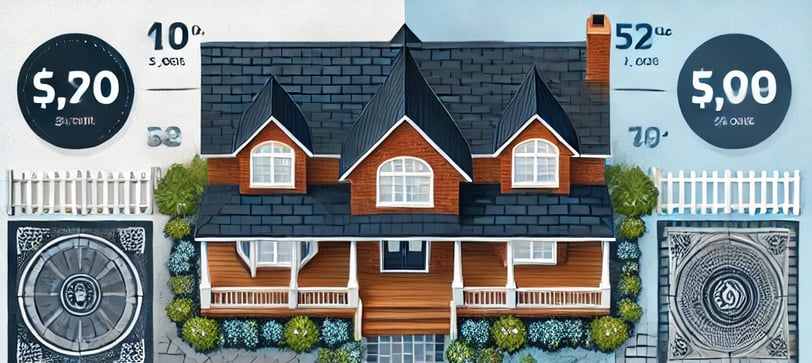

4. Cost Comparison: Stamped Concrete vs. Pavers
Budget is often one of the biggest deciding factors when choosing between stamped concrete and pavers. Here’s how the costs compare:
Stamped Concrete Cost:
Basic designs: $8 - $12 per square foot
More intricate patterns: $12 - $18 per square foot
Sealing and maintenance: Additional long-term costs
Repairs: Can be costly if cracks occur
Paver Cost:
Basic pavers: $10 - $15 per square foot
Premium materials (natural stone, high-end pavers): $20 - $30 per square foot
Repairs: Lower costs, as individual pavers can be replaced
Installation may cost more initially, but long-term savings due to durability
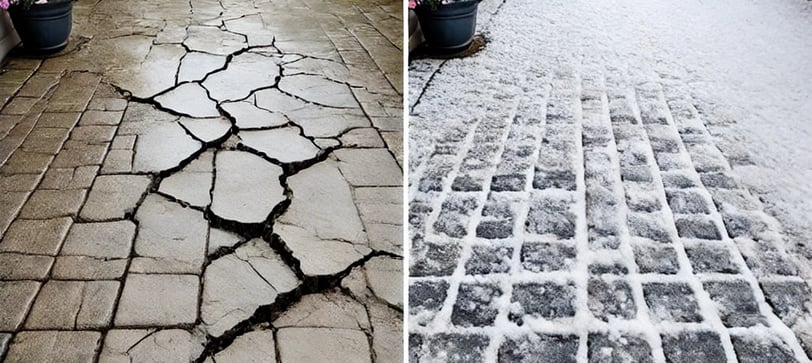

5. Climate Considerations: Which Performs Better in Different Climates?
The climate of Kansas City and surrounding areas plays a crucial role in determining the best patio material.
Stamped Concrete in Various Climates:
Can crack in freeze-thaw conditions, making it less ideal for areas with harsh winters.
Absorbs heat quickly, making the surface hot to walk on in the summer.
Requires proper sealing to prevent water penetration, which can lead to freeze-thaw damage.
Pavers in Various Climates:
Adapt well to freeze-thaw cycles, as they allow for natural movement.
Stay cooler than concrete in hot climates, making them more comfortable to walk on barefoot.
Do not develop large cracks, reducing long-term repair needs.
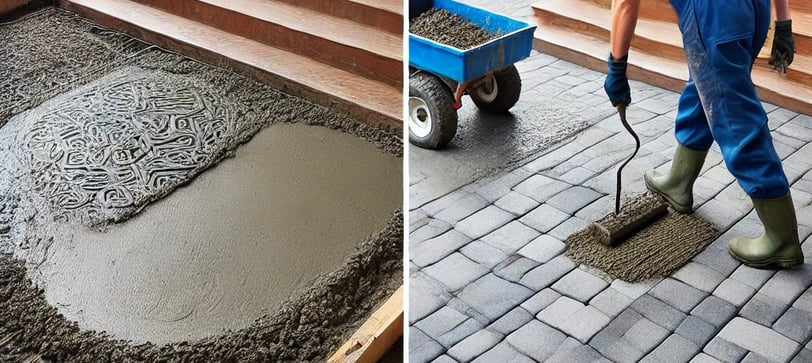

6. Installation Process: What to Expect?
Understanding the installation process can help homeowners plan accordingly and avoid surprises.
Stamped Concrete Installation:
Requires excavation, formwork, and reinforcement.
Concrete is poured, stamped, and colored while still wet.
Needs curing time (usually a few days) before use.
If done incorrectly, surface imperfections like cracks and uneven textures can occur.
Paver Installation:
Ground is excavated and leveled.
A layer of sand or gravel is laid for a solid foundation.
Pavers are arranged and compacted into place.
Can be used immediately after installation with no curing time.
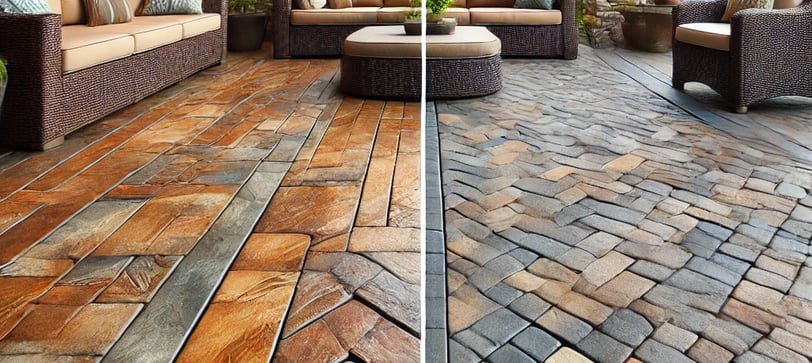

FAQs
How do you level a sloped yard for a patio?
Grading and excavation are essential, often requiring retaining walls or stepped terraces.
Does a concrete patio need rebar?
Yes, rebar significantly enhances durability and prevents cracking.
What is the best foundation for a patio on a slope?
A combination of compacted gravel, retaining walls, and proper drainage solutions works best.
Should a concrete patio be sloped?
Yes, a slight slope (1–2%) prevents water pooling and improves drainage.
For expert guidance and installation, trust ProDeck Solutions to create a strong and stunning concrete patio that withstands the test of time.
Final Thoughts
Choosing between stamped concrete and pavers depends on your budget, maintenance preference, and design goals. Stamped concrete offers a cost-effective and stylish solution but requires regular sealing and potential repairs. Pavers, while more expensive upfront, provide long-term durability, flexibility, and ease of maintenance.
At ProDeck Solutions, we specialize in both stamped concrete and paver patio installations. Our experts can guide you through the best choice based on your specific needs. Contact us today to transform your outdoor space with a patio that suits your lifestyle and enhances your home’s value!


HOURS OF OPERATION
Mon - Fri: 9:00AM - 5:00PM
Sat & Sun: Closed
